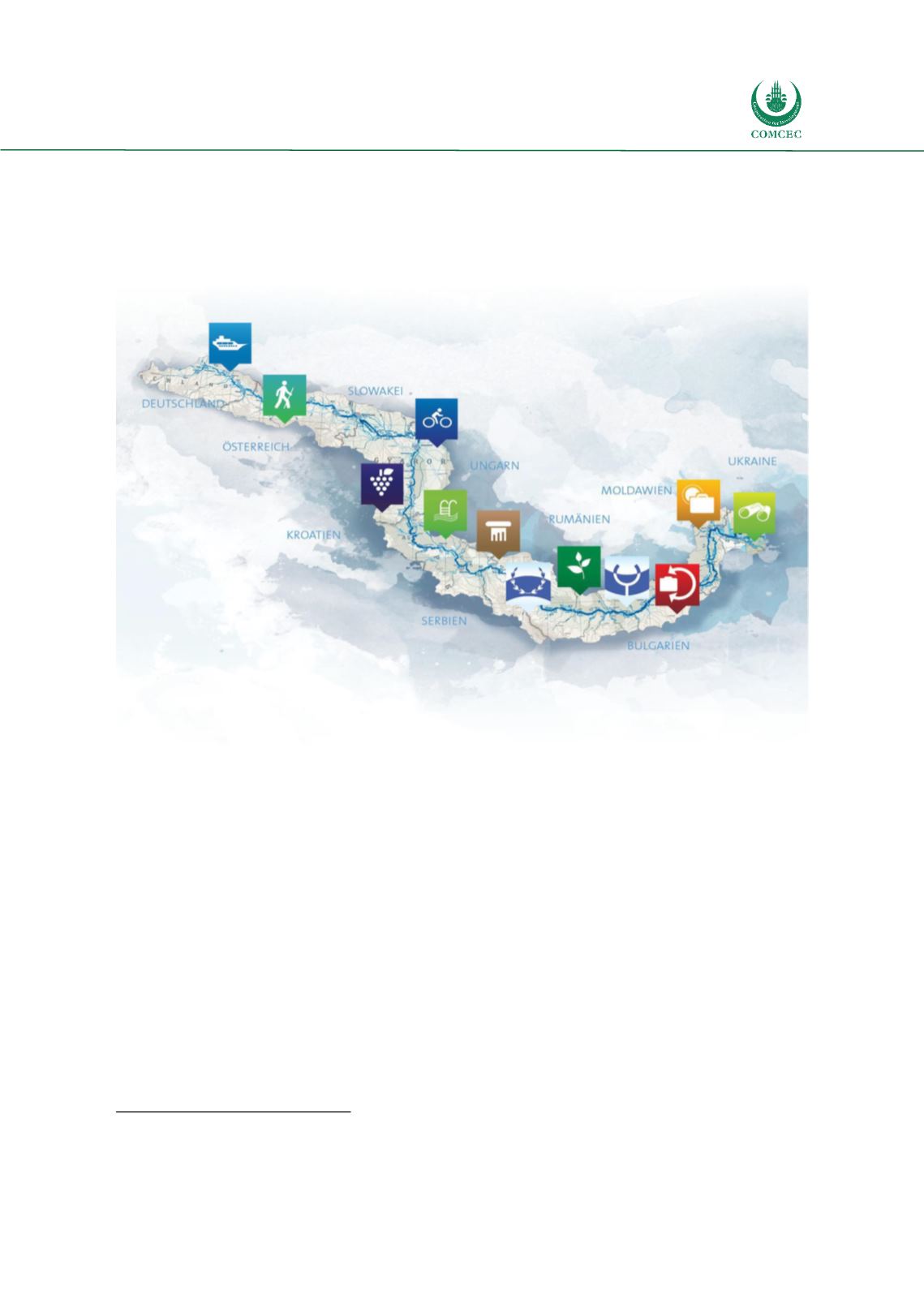

Sustainable Destination Management
Strategies in the OIC Member Countries
103
3.1.2.
The Danube Tourism Corridor
Background
Figure 36: The Danube Tourism Corridor Map
Source: Danube Competence Center
Although the Danube River, the second largest in Europe, has connected people, countries, and
traditions for thousands of years, during the Cold War, the Danube separated Slovakia
(Czechoslovakia) and Hungary from Austria, and communist Romania and Bulgaria from the
more open, independent-minded Yugoslavia. With the end of the Cold War, the Eastern
European countries of the Danube region started to emerge as tourism destinations, and it was
in 2010 that the idea of closer cooperation started to materialize. Similarly, Western European
destinations such as Germany and Austria saw the potential for cross-border tourism in areas
such as cycling.
344
The Danube connects ten countries: Germany, Austria, Slovakia, Hungary, Croatia, Serbia,
Bulgaria, Romania, Ukraine, and Moldova. One activity in particular that connects all countries
in a seamless way is river cruising, although even today, many cruises end in Budapest or
Belgrade, and only few reach the Danube Delta, apart from the fact that the associated economic
344
"The Danube Cycle Path from Donaueschingen to Budapest," Komoot, accessed October 12, 2019,
https://www.komoot.com/collection/359/the-danube-cycle-path-from-donaueschingen-to-budapest.















